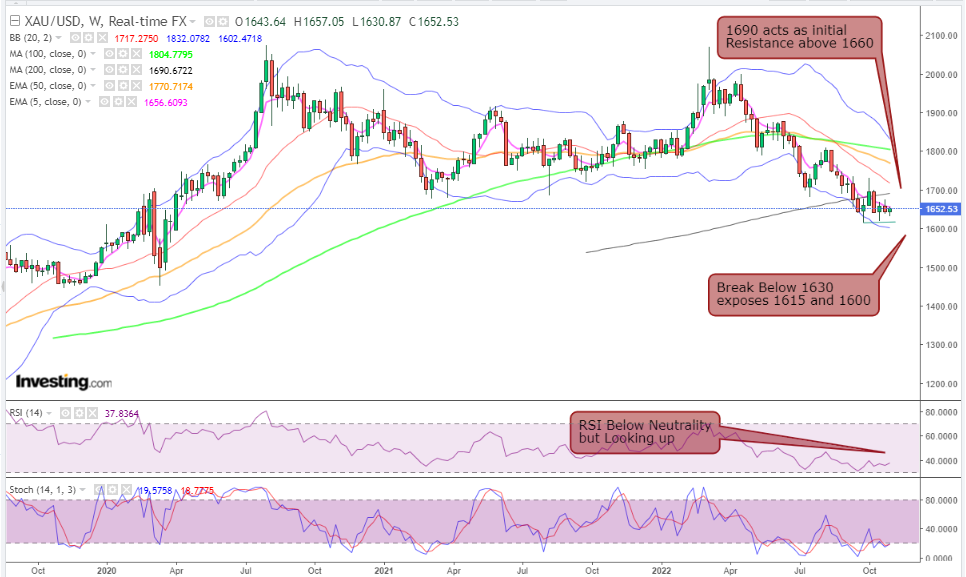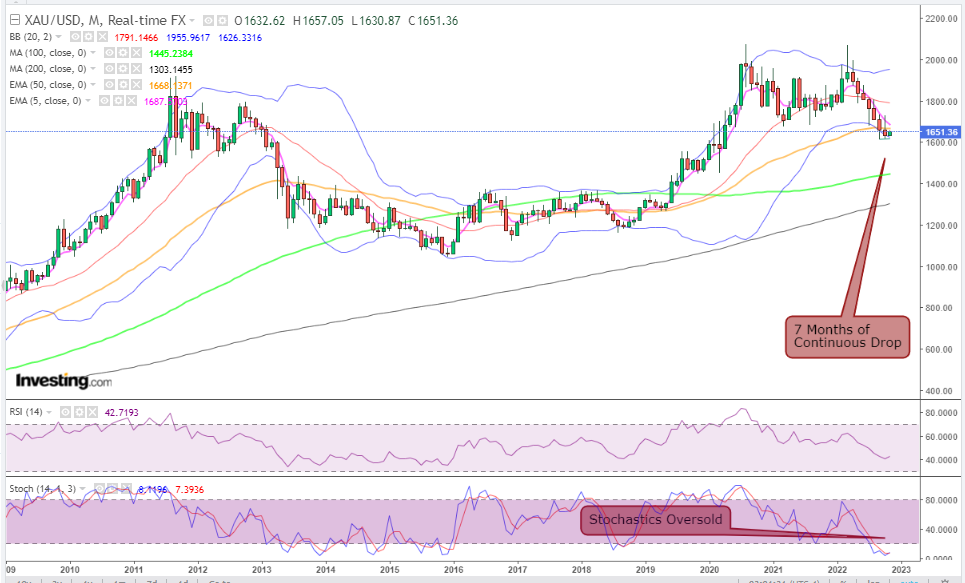- In addition to the Fed’s interest rate decision, the non-agricultural report is also very important;
- If the number of non-farm payrolls falls below 191,000, the Fed may slow down the pace of interest rate hikes;
- If non-farm payrolls are close to September’s 263,000, the Fed will maintain an aggressive tightening pace;
- Gold is expected to test as high as $1,735 by Friday, or fall below $1,600, depending on non-farm payrolls.
Yingwei Financial Investing.com – The Federal Reserve raised interest rates by 0.75% as scheduled, but the focus was still on the prospect of a rate hike in December. As Powell once again showed his determination to raise interest rates, the risk market was greatly suppressed. So, the next question is, where will the nonfarm payrolls data go on Friday?
It will determine the future direction of gold and its “enemy” – there is no doubt that gold prices will have an even bigger hurdle to cross. Because the jobs report will provide investors with clues as to whether the Fed will begin to ease its tightening policy before the end of the year, and to be decisive in the Fed’s decision, October’s job growth must be lower than economists 191,000 expected given.
Sunil Kumar Dixit, chief technical strategist at investment agency SKCharting.com, said that at least from the trend of the technical chart, if the employment data is weaker than expected, the price of gold may test $ 1,735 at the high end, which has reignited speculation of the Fed turning; but If job growth beats expectations — near or above September’s 263,000 — then the Fed is all but likely to continue raising rates by 75 basis points in December. Dixit believes that such an outcome could weigh heavily on gold bulls, pushing it back to the brink of the $1,600 low.
He said in the report, “Gold prices have fallen continuously after breaking through the all-time high of $2,073, and have been falling for seven consecutive months. Currently, gold prices have rebounded from the basic demand zone of $1,615, and there is enough upside to test $1,690 and $1,723. But that would require clearing immediate resistance at $1,660 first.”

Dixit also said that any profit booking from such intermediate resistance levels could spark bearish momentum, pushing gold back to support at $1,630 and $1,615, “a break below $1,615 would take gold to $1,598 very quickly,” On the longer-term monthly chart, a potential bearish cross between the 5-week exponential moving average (EMA) at $1,687 and the 50-week moving average at $1,668 could limit an initial rally.
“If gold bulls can break the horizontal resistance area of $1,725-$1,735, then a move towards $1,791 should be the next area of interest,” Sunil Kumar Dixit also said. “Instead, a consolidation below $1,630-$1,615 Adding to the continuation of the bear market, targeting $1,560 in the medium term. In the short term, we expect gold to trade up in the $1,660-$1,690 range and down in the $1,630-$1,600 range.”

Investors have been jittery about the Fed’s aggressive rate hikes since the summer. The Fed’s rate hike policy rose from 25 basis points in March to 75 basis points in June, and has maintained this hawkish policy stance – the Fed’s inflation target is 2% per annum, and it says it will not hit the target until Interest rates will not be lowered.
As of September this year, it was 8.2%, not far from the 9.1% as of June this year, both at 40-year highs. As a result, the Fed plans to raise interest rates further by the end of the year.
For now, the Fed is not ready to ease any policy, according to Ed Moya, an analyst at online trading platform OANDA. He noted, “Expectations that the Fed will ease its pace of tightening in December have fueled momentum in the market, but it now appears that such predictions may be premature. If the labor market remains healthy, inflation is ultimately higher than the market initially Think stickier, then interest rates may need to stay higher for a longer period of time.”
The U.S. Labor Department’s September report released on Tuesday showed that the number of U.S. jobs in September was much higher than expected, with 10.72 million jobs in September, higher than the forecast of 9.85 million, and almost every job seeker corresponds to two positions.
And this report seems to have complicated the Fed’s work to fight inflation – economist Adam Button said in a ForexLive forum article, “The JOLTS report reverses the recent decline and adds to the long-term tightening of the labor market. , the risk that the Fed will need to raise rates further.”
A good labor market has been one of the most commendable strengths of the U.S. economy for the past two years. But it’s also anathema to the Fed, as strong wage growth fuels the worst inflation in 40 years.
In any case, a more important October non-farm payrolls data will be released on Friday. This is one of the most critical reports from the Federal Reserve before the interest rate decision at the end of the year. Economists expect non-farm payrolls to increase by 191,000 last month. , an increase of 263,000 in September.
And investors need to remember that fighting inflation isn’t the Fed’s only agenda. The Fed is also mandated to ensure “maximum employment” for Americans, which is sure to put the Fed in a dilemma between two priorities.
The Fed’s definition of so-called “maximum employment” is staying below 4% per month, and the unemployment rate has remained below this level since the beginning of the year, so it seems that the Fed has performed better on this project.
[This article is from Yingwei Caiqing Investing.com, to read more, please log on to cn.Investing.com or download Yingwei Caiqing App]
(Translation: Li Shanwen)
